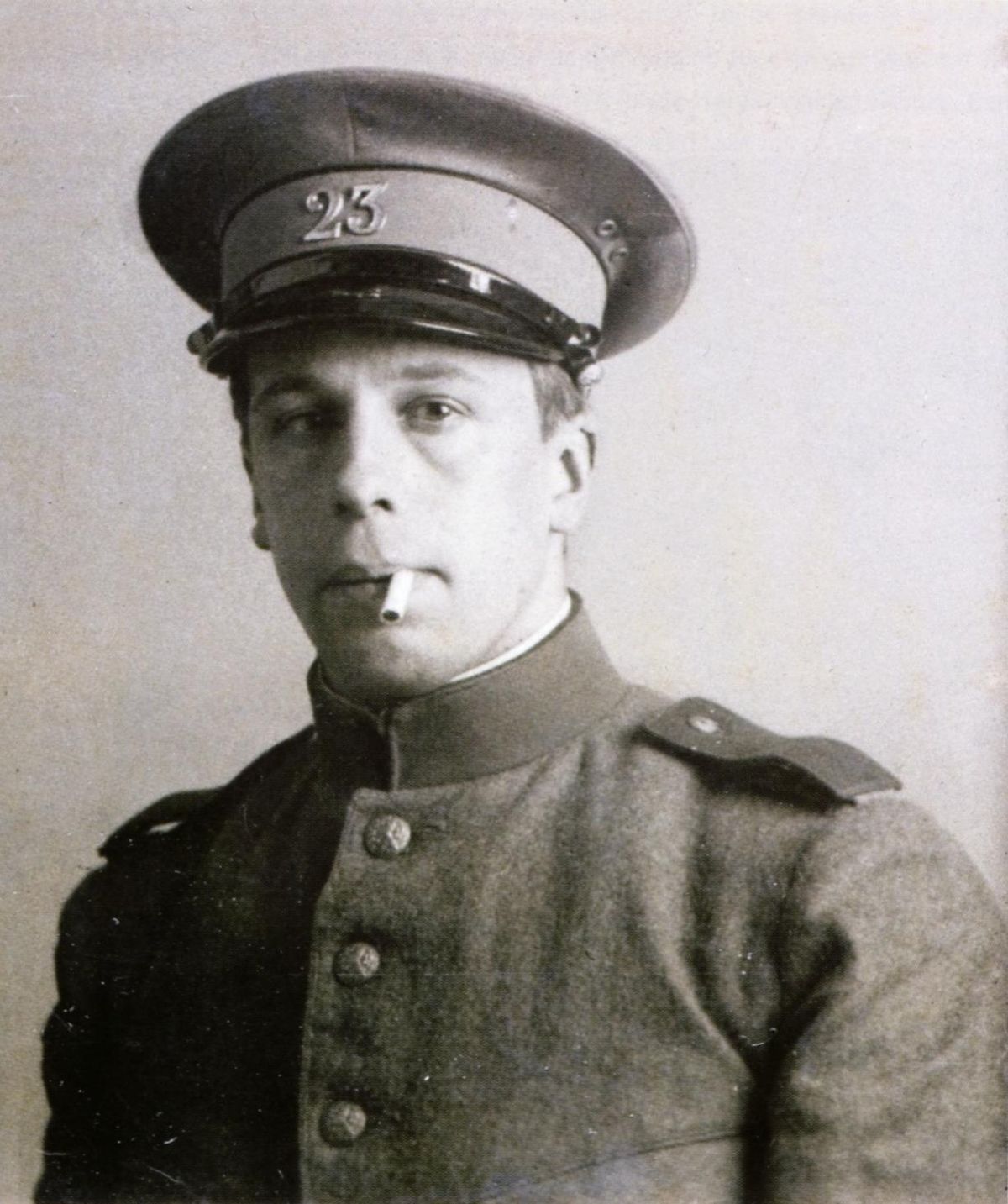Theo van Doesburg (1883-1931) (born Christian Emile Marie Küpper) was a pioneering Dutch artist, designer, writer, and architect, best known as the founder and key theorist of the De Stijl movement, alongside Piet Mondrian. He believed in the unification of art forms—painting, architecture, and design—as a cohesive, immersive experience, once stating:
“What I am trying to realize is a universal form which entirely corresponds to my spiritual vision.”
Born in Utrecht, the Netherlands, in 1883, he later adopted the surname of his stepfather, Theodorus Doesburg. His early work began in a naturalistic and then Post-Impressionist style. However, a turning point came in 1915 when he encountered Mondrian’s abstract compositions. Inspired by this radical approach, van Doesburg shifted his focus toward geometric abstraction and universal harmony.
In 1917, he co-founded the De Stijl movement and its journal, promoting the ideals of Neo-Plasticism—a style characterized by grids, primary colors, and asymmetry. He collaborated closely with architects J.J.P. Oud and Jan Wils and contributed to architectural projects such as De Vonk in 1917. In 1926, he expanded the De Stijl aesthetic through his theory of Elementarism, which introduced diagonal lines to break the rigidity of strict horizontals and verticals.
Though he sought a teaching position at the Bauhaus, Walter Gropius declined his application. Nevertheless, van Doesburg remained deeply connected with Bauhaus members and European avant-garde artists, collaborating with figures such as Jean (Hans) Arp, Sophie Taeuber-Arp, Kurt Schwitters, and Tristan Tzara. In 1930, he co-founded the Art Concret group and played a leading role in the formation of Abstraction-Création, a collective advocating non-representational art.
He also left a significant architectural legacy through projects like the L’Aubette interior (1926, Strasbourg) and his own residence in Meudon, France. Sadly, van Doesburg passed away in Davos, Switzerland, in 1931 at the age of 47, while abstract art was still in its formative stage.
Today, his work is preserved in prestigious institutions such as the Solomon R. Guggenheim Museum (New York), Tate Gallery (London), and the Centraal Museum (Utrecht), testifying to his enduring influence on modern art, design, and architecture.

Oil on Canvas
12.5 x 12.5 in | 31.8 x 31.8 cm
We respect your privacy and will not sell your information.
We only send a Newsletter once every 2 months. Unsubscribe anytime.
art@vancouverfineartgallery.com
Vancouver Fine Art Gallery,
2233 Granville Street
Vancouver, BC, Canada
Vancouver Fine Art Gallery is proud to present a collection of the finest original paintings and sculptures by established contemporary artists, French impressionists, 20th-century masters, and local Canadian artists at 2233 Granville Street (near Downtown) Vancouver, BC, Canada. We are open 7 days a week and open for Art Walks Evenings.
©️ Vancouver Fine Art Gallery. All Rights Reserved